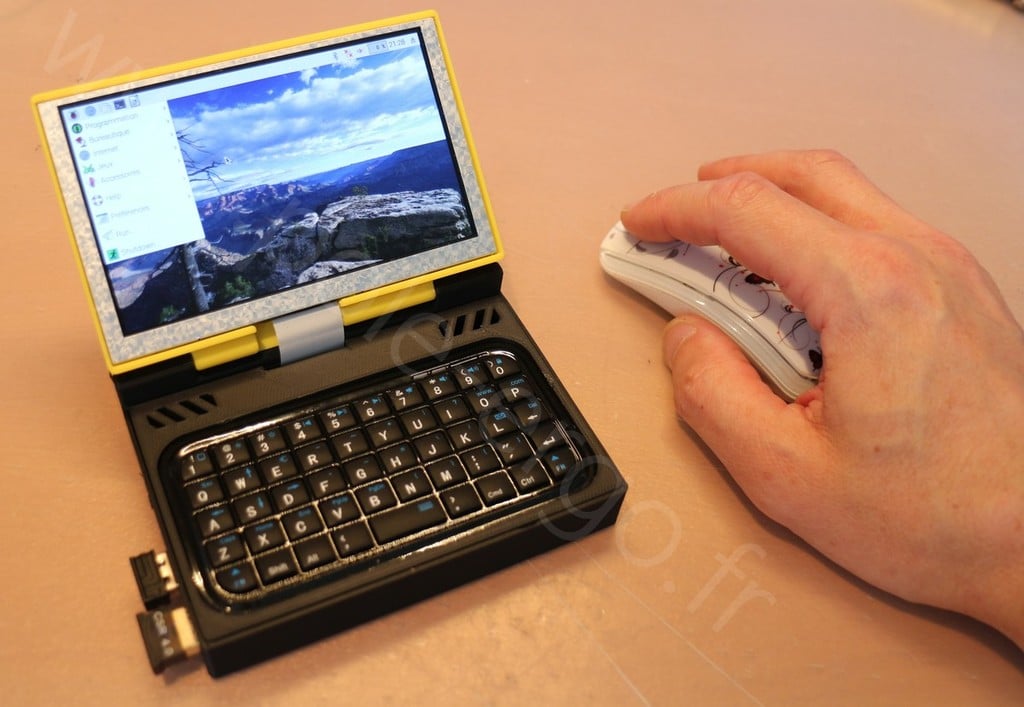
Raspberry UMPC
thingiverse
Voici une traduction de l'article : **Ajout d'un radiateur sur les processeurs de la carte pour un meilleur refroidissement** Pour améliorer le refroidissement de la carte, il est recommandé d'ajouter un radiateur sur les processeurs. Pour cela, il faut raccourcir les pattes du port GPIO afin que le ensemble ne dépasse pas 8,5 mm de épaisseur. **Clavier :** * Débrancher le clavier et dessouder la batterie (attention danger de court-circuit) * Récupérer la platine électronique, la membrane en caoutchouc et le cache * Câbler la platine pour l'alimentation en 3,7 volts pris de la platine Adafruit Kippah * Installer la platine dans la partie imprimée puis sceller en faisant fondre les picots en plastiques * Placer la membrane puis le cache en force **Ecran :** * Installer le connecteur et plier le ruban ainsi que le montre la photo * Coller l'écran dans le cadre imprimé avec de la colle contact en laissant dépasser le ruban de 3 cm **Batterie :** * Installer le power booster Adafruit et un interrupteur sur le couvercle de la batterie * Câbler l'ensemble selon le mode d'emploi proposé par Adafruit pour son module **Boitier :** * Installer la batterie sur le boitier, passer les fils d'alimentation par le passe câble * Souder les fils d'alimentation batterie sur les pad 5V et GND du Raspberry * Souder l'alimentation du clavier sur les pad d'alimentation proposés par la platine Adafruit : GND et 3,3v * Monter la platine Adafruit sur le Raspberry. Installer la carte sd, connecter l'écran et Installer l'ensemble dans le logement prévu. **Pour ceux qui ne disposent pas d'une imprimante 3D, les pièces plastique composant ce kit peuvent être commandées sur Shapeways.** J'espère que cela vous a aidé ! N'hésitez pas à me demander si vous avez des questions supplémentaires.
With this file you will be able to print Raspberry UMPC with your 3D printer. Click on the button and save the file on your computer to work, edit or customize your design. You can also find more 3D designs for printers on Raspberry UMPC.
